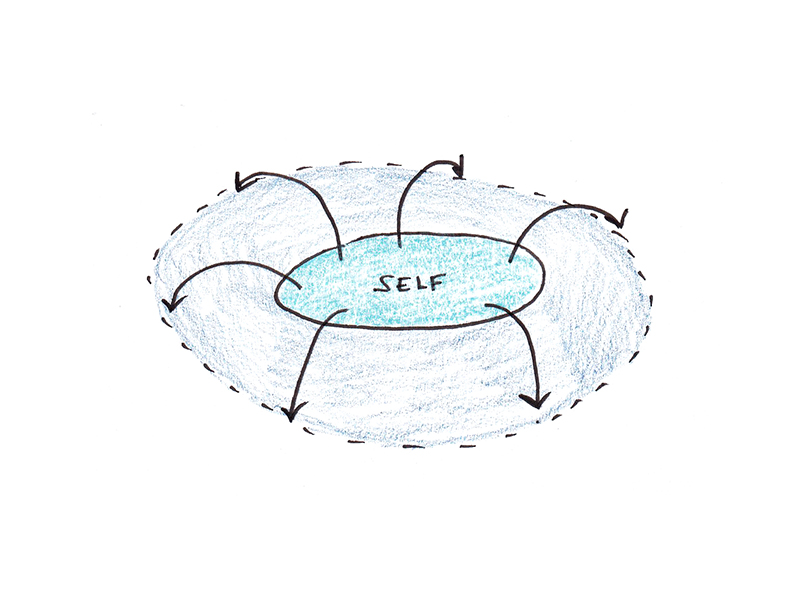Hellstar: The Rise of a Streetwear Revolution
Hellstar—a brand that has rapidly emerged as a formidable force in the streetwear landscape. With its bold graphics, unapologetic aesthetic, and strong cultural resonance.
In the ever-evolving world of fashion, where trends are born and forgotten at breakneck speed, there are a few brands that rise above the noise to make a lasting impact. One such name is Hellstar—a brand that has rapidly emerged as a formidable force in the streetwear landscape. With its bold graphics, unapologetic aesthetic, and strong cultural resonance, Hellstar isn’t just selling clothes; it’s creating a movement. From underground beginnings to mainstream recognition, this article delves deep into the essence of Hellstar, exploring its origins, design philosophy, cultural impact, and future trajectory.
The Origins: Hellstar’s Mysterious Beginnings
Every revolutionary brand has an origin story, and Hellstar’s is steeped in mystery and intrigue. Unlike traditional fashion houses that build their name through luxury legacy or celebrity endorsements, Hellstar’s ascent was organic, raw, and rooted in authenticity. Emerging from the depths of urban culture, Hellstar tapped into the unfiltered expressions of youth rebellion, pain, power, and identity.
The brand’s name alone—Hellstar—evokes a paradoxical fusion of light and darkness. It suggests an angelic celestial being forged in chaos. This duality reflects the lives of many young people navigating the gritty realities of modern society while still clinging to dreams of greatness. Hellstar’s founders recognized this tension and used it as a foundation for a brand that defies conventional norms. There’s an intentional vagueness about its leadership; anonymity and mystique have become integral to the brand’s identity, reinforcing its raw, anti-establishment persona.
Aesthetic Identity: Dark, Bold, and Symbolic
Hellstar’s visual language is impossible to ignore. With motifs that blend cosmic elements, flames, skulls, angelic figures, and cryptic phrases, the brand doesn’t shy away from making statements. Each design feels like a chapter in a larger, cosmic narrative—one that’s still unfolding. Hellstar has carved a niche in the space where gothic imagery meets streetwear swagger, creating pieces that feel both otherworldly and grounded in urban grit.
Color palettes are typically dark—blacks, deep purples, charcoals—often contrasted with flashes of red, white, or neon green. The graphics are often haunting, featuring distorted faces, spiritual symbology, and apocalyptic backdrops. These elements are not merely for shock value. They’re deeply symbolic, speaking to themes of struggle, transcendence, mortality, and redemption.
Hellstar’s designs are wearable art. Whether it’s the signature Hellstar hoodie, an oversized graphic tee, or intricately stitched pants, each piece invites conversation. It’s fashion that doesn't just look cool—it says something profound.
Streetwear with Substance: More Than Hype
In today’s saturated fashion scene, many brands rely heavily on hype, limited drops, and influencer collaborations to stay relevant. While Hellstar has certainly capitalized on drop culture and scarcity, its success stems from something far more substantial: authentic storytelling. Hellstar garments are not mass-produced for the sake of virality. Instead, each drop feels intentional, thematically cohesive, and rooted in a larger philosophy.
The brand resonates with a generation disillusioned by performative luxury and corporate branding. Hellstar's appeal lies in its raw honesty and emotional intensity. Its fans aren’t just buying clothes; they’re buying into a philosophy—one that embraces the pain, confusion, and beauty of modern existence.
What truly sets Hellstar apart is its ability to tap into emotional subcultures—those pockets of society that crave vulnerability, introspection, and self-expression. Hellstar is for the kids who journal their thoughts, attend underground shows, design on cracked software, and find solace in late-night solitude. It's a brand that wears its heart on its sleeve—literally and figuratively.
Celebrity Endorsements and Cultural Co-signs
While Hellstar’s foundation is deeply rooted in underground culture, its rise to prominence has been boosted by key cultural endorsements. Prominent figures in music, sports, and fashion have been spotted wearing Hellstar—Travis Scott, Lil Uzi Vert, Central Cee, and other high-profile artists have been photographed in Hellstar gear, catapulting the brand into mainstream awareness.
These endorsements are not just strategic—they're organic. Many of these artists gravitate toward Hellstar not because of brand deals, but because they genuinely resonate with its aesthetic and philosophy. In an era where authenticity is currency, this kind of alignment is invaluable.
Beyond individual celebrities, Hellstar has cultivated a cult-like following on social media platforms like Instagram and TikTok. Drops sell out in minutes, and resale markets are flooded with fans desperate to get their hands on exclusive pieces. The brand has also appeared in underground music videos, DIY editorials, and influencer reels, contributing to its viral momentum.
Community and Cult Following
Perhaps the most powerful aspect of Hellstar is its community. More than just customers, Hellstar fans form a tightly-knit subculture that shares not only a love for fashion, but also common values, struggles, and aspirations. The Hellstar community thrives on Instagram pages, Reddit threads, Discord servers, and popup events. It’s a digital tribe bound together by a shared identity—a blend of outsider energy, artistic ambition, and spiritual curiosity.
Fans often customize their Hellstar pieces, treat them like relics, or incorporate them into larger artistic projects. The brand encourages this behavior by fostering a sense of ownership and belonging. This communal energy has transformed Hellstar from a fashion label into a movement, where people express themselves without apology.
This grassroots energy is powerful. It’s the kind of loyalty that can’t be bought or faked. And it’s what ensures that Hellstar’s relevance will continue to grow even as other trend-driven brands fade away.
The Symbolism Behind the Brand
Hellstar Hoodie isn’t just about aesthetics—it’s about meaning. Every symbol, stitch, and slogan has depth. The use of hellish imagery juxtaposed with celestial themes speaks to the internal battles many face—the duality of good and evil, light and darkness, heaven and hell. This theme of duality is ever-present, reflecting the human condition in its rawest form.
For instance, slogans like “Born from pain, destined for greatness” or “We are the light in the void” aren’t just catchy taglines—they’re affirmations of identity for people who feel like they don’t fit into traditional molds. Hellstar garments become armor for the emotionally complex, the creatively misunderstood, and the spiritually inquisitive.
The logo itself—often a star encircled by flames—symbolizes that very transformation: enduring the fire to shine brighter. It’s a metaphor that speaks to trauma, healing, and self-reinvention. No wonder so many fans resonate with the brand—it mirrors their personal journeys.
Limited Drops and Strategic Scarcity
Scarcity is a double-edged sword in fashion. Done right, it cultivates demand. Done wrong, it alienates loyal fans. Hellstar has mastered the art of strategic scarcity. Their limited drops, often teased with cryptic previews and countdowns, generate immense anticipation. Each release is like an event, and the sense of urgency fuels the hype.
But unlike brands that rely solely on FOMO (fear of missing out), Hellstar uses scarcity to protect the integrity of its vision. Each item is made with care, often in limited quantities to maintain exclusivity and attention to detail. This approach ensures that Hellstar remains both coveted and respected.
Additionally, Hellstar doesn't flood the market with collaborations. Instead, it chooses partnerships selectively—often aligning with underground creatives, niche artists, or culturally relevant figures. This maintains the brand’s credibility while expanding its reach.
Challenges and Controversies
No brand rises without facing hurdles, and Hellstar is no exception. Some critics argue that its dark imagery is too intense or controversial. Others question the sustainability of its drop model, suggesting it contributes to the very consumerism Hellstar seems to critique.
There have also been conversations around accessibility—many fans who resonate with the brand’s message can't always afford the premium prices or secure limited releases. Hellstar, for its part, has occasionally addressed this by offering basic items at lower price points or creating capsule collections with broader appeal.
Still, the brand walks a delicate line between staying underground and growing commercially. It must now navigate the challenge of expanding without losing its soul—something that has tripped up many indie labels in the past.
Looking Ahead: The Future of Hellstar
The future looks promising for Hellstar. As streetwear continues to evolve into a dominant force within global fashion, Hellstar is poised to become one of its most important players. However, the brand’s true strength lies not in market trends but in emotional resonance. As long as people continue to search for meaning, identity, and expression through clothing, Hellstar will have a place in the cultural conversation.
Expanding into new categories—like footwear, accessories, and even immersive experiences—could be on the horizon. There’s also potential for the brand to deepen its narrative through digital storytelling, film, or graphic novels, creating a fully-fledged Hellstar universe.
The rise of virtual fashion and NFTs may also provide new avenues for Hellstar to explore, especially given its rich visual language and cult following. The brand’s cosmic, dystopian aesthetic lends itself naturally to digital expression.
Hellstar as a Symbol of a Generation
Hellstar Shirt is more than a brand—it’s a mirror. A mirror that reflects the pain, resilience, hope, and complexity of a generation that refuses to be boxed in. In an age where authenticity is the ultimate luxury, Hellstar offers something truly rare: a brand that feels like it was created with you, not for you.
With its fearless visuals, emotional honesty, and deep community roots, Hellstar has become a symbol of modern youth culture. It represents the fire within, the star beyond reach, and the journey in between. And for many, wearing Hellstar isn’t just about making a fashion statement—it’s about declaring to the world: I’ve been through hell, and I’m still shining.





































































































![Building A Digital PR Strategy: 10 Essential Steps for Beginners [With Examples]](https://buzzsumo.com/wp-content/uploads/2023/09/Building-A-Digital-PR-Strategy-10-Essential-Steps-for-Beginners-With-Examples-bblog-masthead.jpg)
















































